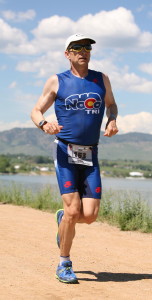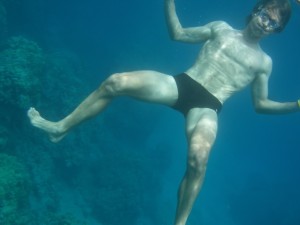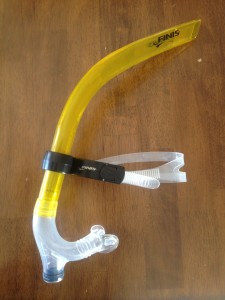I was talking on the phone a couple weeks ago with one of my clients that is racing in Kona this October and I posed a simple question to him; Why do you want to do another Kona Ironman? I liked his response so much, that I thought I would share it. Possible it may help the rookie Ironman or a gentle reminder for the seasoned veteran on how to keep the balance.
Bill Greentree
The first time you enter an Iron distance triathlon you really have no idea what you're in for. You might not even be sure just how you came to the decision to enter an Ironman race. Our reasons for wanting to complete an Ironman distance event go well beyond our desire for a brief moment in the spotlight. For some it's a natural evolution of their current sport or a lifetime of athletic endeavors. For others it's a fad, they just want to hear the famed “You are an Ironman!” (He doesn't say it every time by the way.) Some are just natural triathletes and want to give the long course a go. A very few are competitive by nature and want to one up someone they know. And then there are the pro's.
I'm not any of those. In fact, I spent most of my adult life avoiding any physical activity that could by any stretch of the imagination be deemed 'exercise'. At age 50 I was tired of being overweight and out of shape so I started a run walk program. I took absolute delight the first time I ran a full mile without stopping. Eventually a combination of factors led to my first triathlon, an Olympic distance race. Six months later in October 2011 at just under 55 years of age I did my third triathlon ever – the Ironman World Championship. I joked with people that the reason I was doing Ironman was because I was a runner in the “Mecca” of the long course triathlon world, Kailua Kona -- it's the only place in the world you have to apologize for being “just a runner.”
Even as an endurance runner with several standalone marathons under my belt, I really wasn't prepared mentally for just what simply completing an Ironman course during the hottest time of the year on Hawaii Island would entail. Your mind focuses on the upcoming race and there are likely as many reactions to that focus as there are people doing the race. A common reaction is paralysis through analysis. You become so intent on the end task (the race) that you can't figure out how to get there. For those of us with real lives it's easy to get overwhelmed with the myriad of details involved in training for three sports when you haven't done this before.
It's easy to succumb to the idea that training for a full length Ironman distance race isn't for the feint of heart or those with limited time to train. After all, it's Ironman for heavens sake. Unless you're careful, Ironman training can easily become a second job and as any person with two jobs, you find yourself becoming adept at juggling schedules, disciplined in following a training program and time management or you end up sacrificing other aspects of your life. That's where your coach comes in. A triathlon coach can take an enormous amount of that stress out of your life and allow you to focus on the task at hand, getting trained to compete. It's his (or her) job to keep that path to the finish line in mind for you. How you train for this or any other race is dependent upon your goals. Are you capable of finishing in the top 3% of age group athletes? Do you simply want to comfortably finish the race? Are you working with a disability or chronic injury? Each answer impacts your goals, priorities and just how you approach training.
Another common reaction to the prospect of an Iron distance race in the not too distant future is becoming overly task oriented. That is, focusing so much on the immediate task at hand that you lose sight of the big picture. The old adage that there's training and then there's racing isn't always true. Some of our workouts are designed specifically to apply to race day: flattening out the hills on the bike, training your legs to run properly when they feel like rubber after a 100 mile ride, simulating the fatigue you feel at the end of the bike ride at mile 20 on the run, etc. Task oriented myopia can lead to forgetting some of these lessons and having them painfully brought home during the race. As an airline pilot, I naturally fell into this category for my first Ironman race. My training program for the 2011 Ironman World Championship was more of a journey than a set of individual exercises. But I missed a lot of that journey by focusing on what I was trying to do rather than where I was going, how I was doing and what I was doing.
I am a runner. I had trained for and finished a December marathon the year before I started triathlons. My training, therefore, concentrated on swimming and building cycling skills and endurance. Running would take care of itself though it was neither ignored nor allowed to languish. What I recall the most are the long bike rides, five plus hours while trying to figure out your nutrition and hydration for those long rides. Anywhere else what we call “nutrition” would be called really bad candy. Oh and the bricks. For someone from a pure running background, bricks are an amazingly humbling experience. Your legs that have served so well on countless runs just don't feel right and you can't make them feel 'normal' anytime soon. But really, no matter how fit you are when you start the journey, you soon find yourself in the best physical condition of your life and you like it.
I hesitated a bit before I pressed the submit button on Active.com for this years race. The first time you have no clue what you're in for. I know better now. I pressed the button anyway. Maybe the answer really is what Frank Shorter said regarding marathons, “You have to forget your last marathon before you try another. Your mind can't know what's coming.” I have four months from the time I found out I had a Kona slot to race day. It's going to be a journey again. This time though, it's not my first rodeo. In fact it really isn't my second (It is my second time to the Ironman World Championship) rodeo either. For the first time I'm intent on maintaining the balance between the big picture and tunnel vision in the task of the moment. I also want to see just how far that commitment to enjoying the journey will go towards not avoiding the discipline I most dislike. Everyone has a discipline they most like to avoid, mine used to be swimming. It just might be fun to see how I do in October if I actually do all my coaches swimming workouts instead of putting them off.
There's also the complacency factor, been there done that; no big deal. The second time around is harder because you have been there before. Motivation, or rather the lack thereof, becomes a real factor. Plus it's a familiar course for me. That's a double edged sword. We know where the course compounds our personal weaknesses so we can train for it. It also is the proverbial sword of Damocles. We know what's coming. All that matters on race day is how you deal with the inevitable adversity; our winds are famous, it's the hottest time of the year, it's also on the edge of one of our rainy seasons – all on the same day sometimes! Overcoming those factors and finishing better than I did three years ago would be a coupe. But I will have fun again. But honestly there's another reason.
It's the last half mile that sucks you in. The finish line is a mere 800 meters away but seems to be a mere speck of light in an otherwise black hole. The music and voices you could hear so clearly out on the Queen Ka`ahumanu highway now sound startlingly muted and distant. Astonishingly the last bit of energy you've been trying to find for 10 km suddenly appears. Your pace quickens along a surprisingly empty road. Even in prime time it seems it's just you all alone on Ali`i Drive. A few elites are out enjoying a post dinner stroll (They can still walk?) and cheer you on (Dinner? How can they eat? Can it really be that late that they're done with dinner?). A spectator who's imbibed a bit too much staggers out onto the road to congratulate you. You really wish he hadn't done that, you're not done yet, besides changing course even by a step just isn't easy after 140 miles. This is what the four months of training and pain were all about – not the miles beforehand – this moment in time. This is why you want to do this. Suddenly a huge noisy crowd materializes yet ironically you hear your family and friends above the din. After listening to Mike Riley call in people for 2 or 3 miles it's your turn. And then it's over. Just. Like. That.
This years race will likely be my last time in the Ironman World Championship. It's rare in life that we get the opportunity to know that we're doing something for the last time. That knowledge is incredibly empowering. We can enjoy the journey, enjoy the sport we most dislike, enjoy the sport we really enjoy the most, enjoy the race and relish the finish. As Bullwinkle Jay Moose used to say, “This time for Sure!”
And I still think it's incredible when I run a full mile without stopping.
Aloha,
Bill
With a little over 3 months until Kona, I know that Bill is in a very good place and will do everything I can to help him enjoy the journey to race day.
Train Smart... Race Fast
Coach Eric








